Bimota V-Due
With Ian Falloon
As a small company based in Rimini on the Adriatic coast, Bimota began in 1973 initially building a frame kit for the Honda 750. Grand Prix success soon established Bimota as one of the world’s premier aftermarket chassis producers, but their dream was always to produce a complete motorcycle, including the engine.
Financial constraints ensured this wouldn’t be a reality until the 1990s when Bimota began to develop a 500 cc two-stroke V-twin. With their roots in racing, Bimota initially hoped to develop the engine for use in GPs. They were encouraged by the debate within the sport early in the decade about banning four-cylinder configurations.
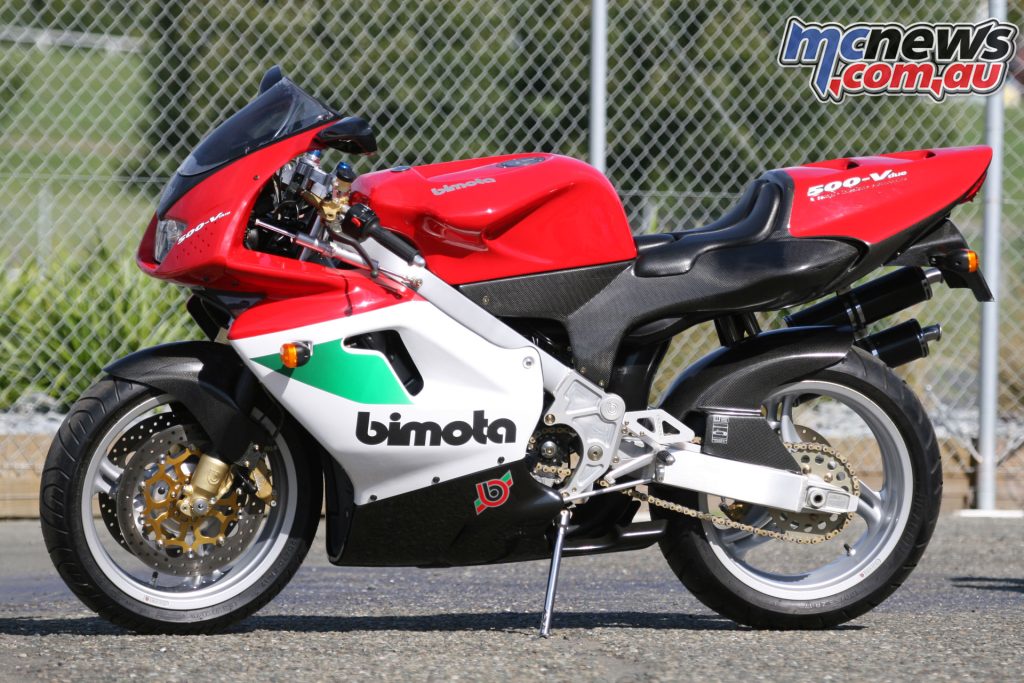
But the level of investment required to develop a complete new bike for GP resulted in a change of direction, and the V-Due ended as a street bike.
Designed by Pier Luigi Marconi, the liquid-cooled 72 x 61.25 mm 499 cc 90-degree V-twin was planned to produce 110 horsepower at 9,000 rpm, with a six-speed cassette-style gearbox and the gearbox oil lubricating the main bearings. Ultimately the power was slightly less, at 100 horsepower at 9,000 rpm.
Bimota’s main problem was that EPA requirements in the US had virtually rendered the production two-stroke motorcycle extinct. The appeal of the two-stroke was its simplicity and high power-to-weight ratio, but the two-stroke principle of using fresh, fuel-rich intake air to clean or scavenge the cylinder of exhaust gases resulted in much of this charge escaping out of the cylinder with the exhaust gases.
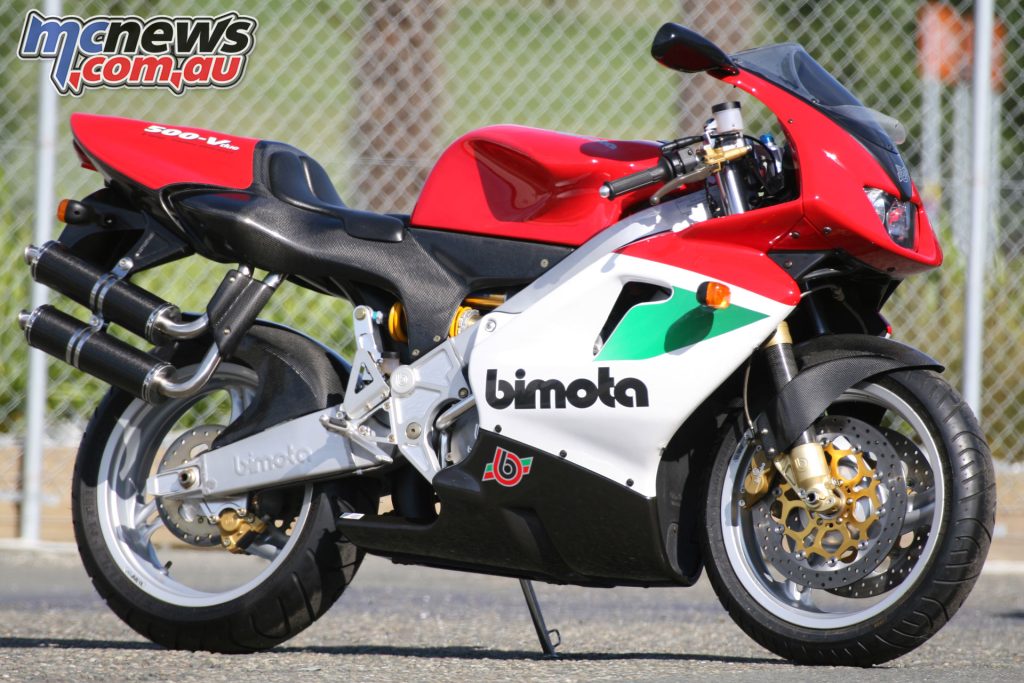
Then the Australian company Orbital developed of a new direct fuel injector system, with the injectors only firing at the moment the exhaust ports have closed. The theoretical result was nice clean exhausts, free of unburned hydrocarbons and this suited Bimota’s requirements.
Bimota adapted this to the V-Due with four injectors feeding the fuel into four-port throttle bodies with two butterfly elements per cylinder and electronic exhaust valves.
As expected, the V-Due provided exceptional handling. Housing this new engine was a traditional Bimota alloy frame, with extruded oval tubes in Peraluman 440 and a cast alloy swingarm with welded alloy arms.
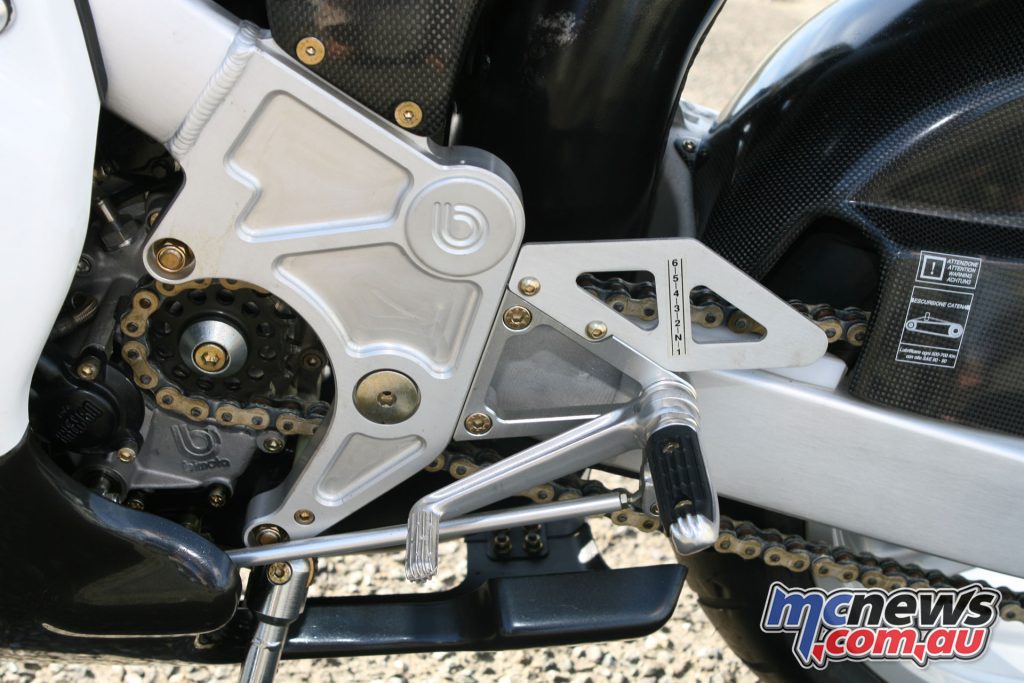
At the front was a conventional fully adjustable 46 mm Paioli fork with carbon fibre outer tubes, and the rear suspension was by a horizontally mounted adjustable single shock absorber. Braking was by Brembo, with a pair of 320 mm front discs with four-piston calipers on the front and a 230 mm disc on the rear.
Rolling on a pair of the lightweight Antera aluminium wheels the V-Due was diminutive, weighing only 160 kg. Reflecting the very best in Italian style and function the design was the work of Sergio Robbiano, with all the bodywork carbon-fibre and imbued with Tricolore colouring.
Bimota displayed the V-Due at the Cologne Show in 1996, promising production during 1997. They even promoted its release by riding three prototypes three thousand kilometres from Sicily to the Isle of Man to commemorate the 90th Anniversary of the TT.
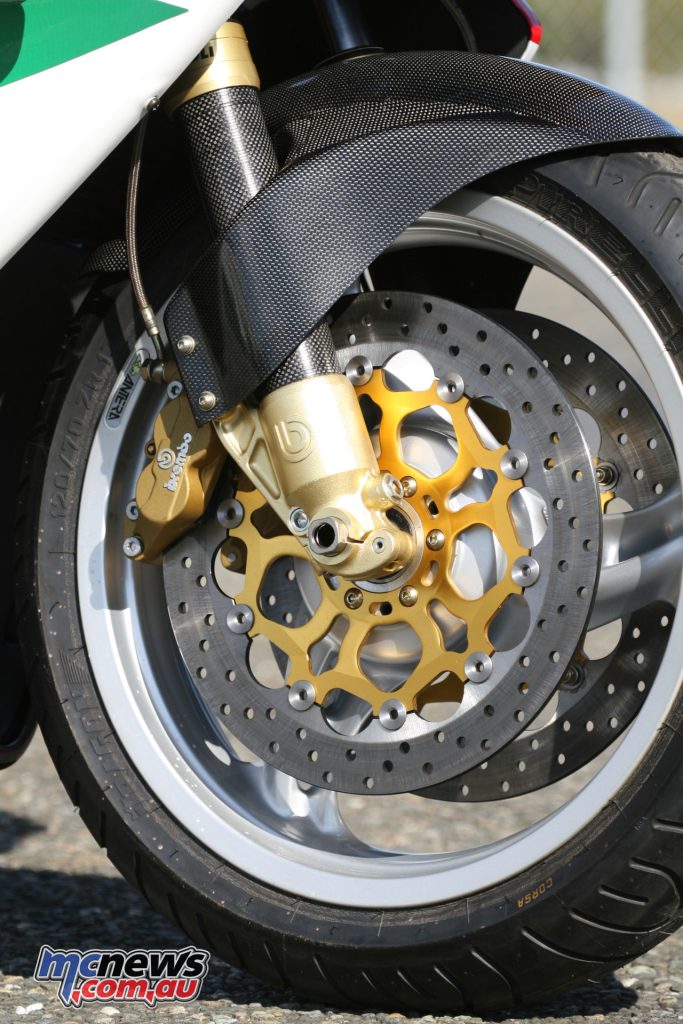
Unfortunately Bimota failed to heed lessons from the past. Honda had unsuccessfully tried to fuel inject Mick Doohan’s NSR500 GP machine in 1993 and while Bimota’s scavenging arrangement differed to Honda’s, their electronic injection system was plagued with problems.
In an effort to recoup some of their development costs the bike went into production prematurely. Bimota was already aware the fine-tuning process was not complete and te first examples were extremely underpowered and suffered many problems. These included loss of oil, intermittent power and piston failure.
The factory was forced to buy back many of the first 185 examples built in 1997 and 1998, then deciding to halve production and continue development. A few Corsa Trofeo carburettor versions were built for the Trofeo Bimota races in 2000, these proving more reliable.
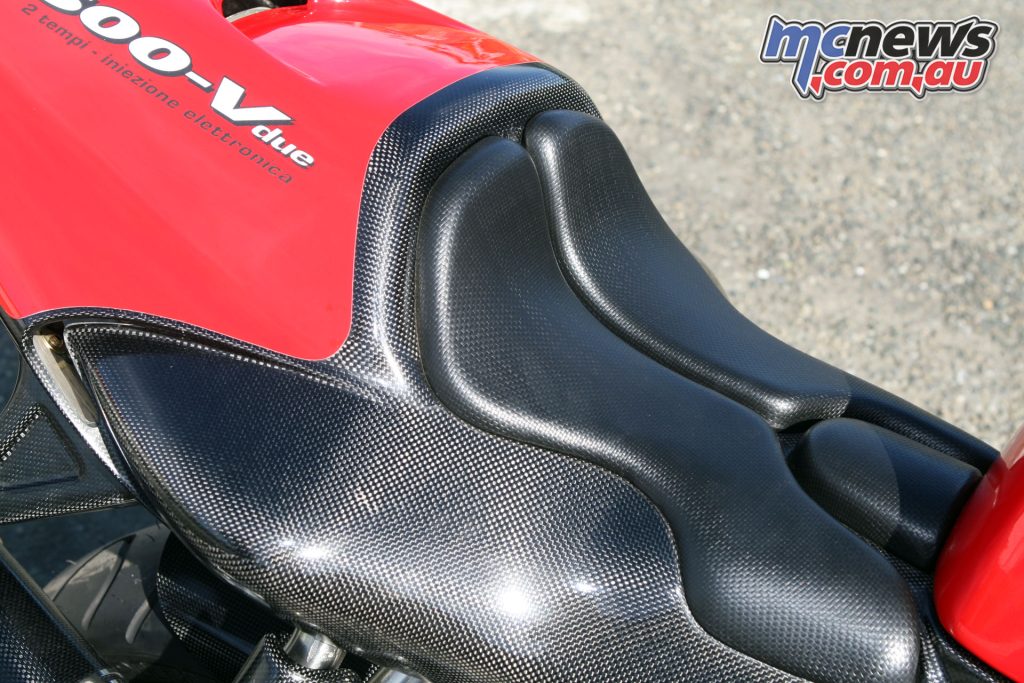
With a pair of Dell’Orto 39mm carbs the power was 122 horsepower. In 2001 another carburettor racing series was produced, the Evoluzione Corsa, now with 135 horsepower.
Released prematurely the Bimota V-Due simply promised more than it could fulfil. Although Bimota eventually overcame the reliability issues it was all too late. The V-Due’s failure led to Bimota’s bankruptcy in March 2001 and only 388 of the planned 500 V-Due’s were built.
Even after Bimota’s bankruptcy V-Due production continued on a limited scale. 141 examples of the V-Due Carburettor Evoluzione were produced between 2001 and 2003, the final versions with the more powerful Trofeo 2000 engine.
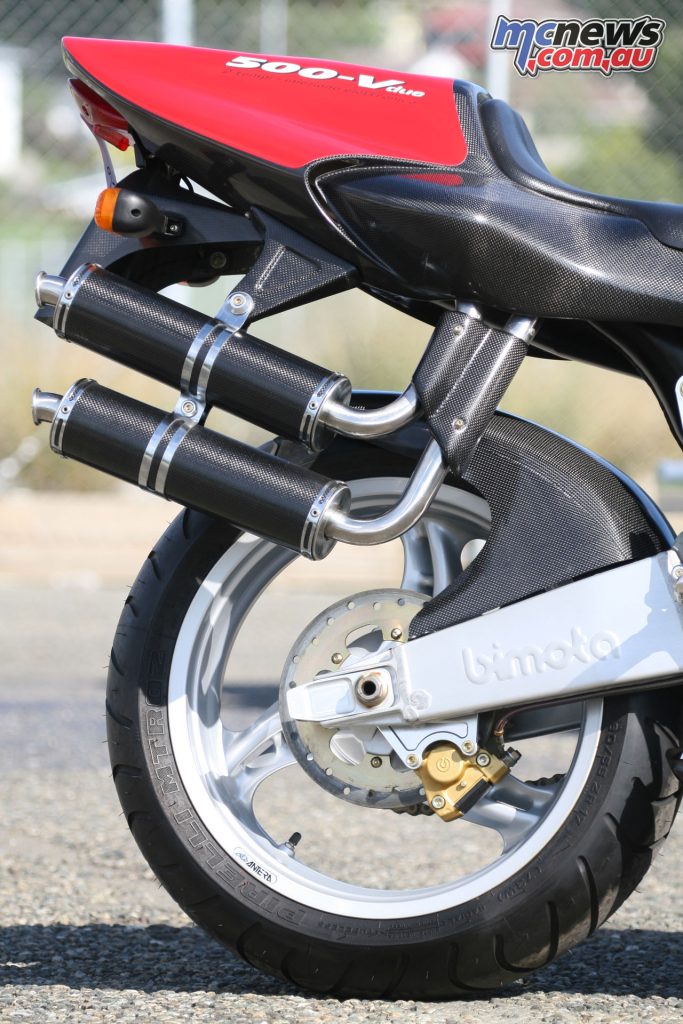
The last version of 30 bikes was the 2005 Racing E.F. (Edizione Finale or Final Edition). With 125-130 horsepower, JollyMoto exhausts, larger brakes and black wheels, these were assembled in the Meda factory in Milan but were not road legal. Today the V-Due’s main claim is as the final remnant of the two-stroke era.
Bimota V-Due Specifications
| Bimota V-Due Specifications | |
| Engine | Liquid-cooled, two-stroke 90-degree V-twin, 499 cc |
| Bore x Stroke | 72 x 61.25 mm |
| Compression Ratio | 12:01 |
| Max Power | 76.6 kW @ 9000 rpm |
| Max Torque | 90 Nm @ 8000 rpm |
| Gearbox | Six-speed |
| Frame | Aluminium-alloy, oval-tube frame |
| Front Suspension | 46 mm Paiolo telescopic forks, fully adjustable |
| Rear Suspension | Monoshock, fully adjustable |
| Brakes | Dual 320 mm front rotors, Brembo two-piston calipers, 230 mm rear rotor, Brembo single-piston caliper |
| Tyres | 120/70-17 (F), 180/55017 (R) |
| Seat height | 176 kg (Dry) |
| Wheelbase | 1340 mm |
| Fuel capacity | 20 L |























